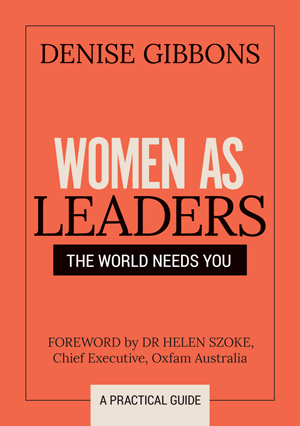It’s all in the Name or is It?
If you have a brain, you are biased.
The Neuroleadership Institute
Surveys over the past few years have indicated that for ASX 200 Australian companies, there are more CEO’s with the name David or Peter or John than women. These surveys were undertaken by Conrad Liveris who is a corporate adviser working with leaders and organisations to improve their performance and impact.
In 2017, there were 19 women CEOs. However, there were 21 Davids, 32 Peters and 32 Johns. So, to be a CEO of an ASX 200 company, you are more likely to be named David, or Peter of John than to be female.
In Conrad’s 2018 survey, a new name has appeared as the front runner. No, it’s not Julia or Angela or Jessica. It’s………….Andrew. Currently, there are more ‘Andrews’ leading ASX 200 organisations as CEOs than there are women.
One point that Conrad makes in his 2018 report is that Australia’s companies have never had this many women sitting alongside men in leadership and this is something to be proud of. I agree wholeheartedly. There is loads and loads of evidence that diverse and inclusive teams of people make the best decisions for our world.
The reason that diversity and inclusion is the rocket fuel for decision making is because teams of people are the best implicit or unconscious bias busters. This bias is part of being human so exists in each and everyone of us. It is not gender specific.
Our minds build systematic ways of thinking called habits. If we had to make every decision every day fresh, new and immediate, we would go insane. Our brains would not cope. So, we build road maps (neural pathways) of connections of how our world operates. The challenge is that the road maps that you build for you may not apply for every situation that happens in the world.
Also, there may be a better road map that someone else has designed if you are prepared to consider that for your world. However, your brain likes safety and certainty and to incorporate a new road map requires a new way of thinking. This makes us feel uncomfortable.
It’s a bit like when you have a systematic way of driving to a particular destination and one day a friend suggests you go a different way. Immediately you feel out of sorts because you know the best way and you don’t have to think too hard to go the old way. This is perfectly normal. The amazing thing though is that when you try the friend’s new way, you discover it is a better way and you wish you had had this knowledge forever.
Imagine if we took a team of diverse people’s ideas about the best way to a destination and applied this systematically. I’d like to think we would have a better outcome.
The Neuroleadership Institute has a saying as above “If you have a brain, then you are biased”. We like to think that we are making rational and optimal decisions all the time, but are we?
Implicit or unconscious bias creeps into the recruitment process too. Our brains like to work with people who look and act like us. This makes it easy for us to navigate our day. We don’t have to think about it too much. Are we going to end up with the best decisions for the organisation though if we all look, think and act alike?
Recruitment processes need to be systematic with step-by-step protocols to eliminate bias. It can be as simple as removing triggers such as names, addresses and schools attended. If you are recruiting and you see that someone comes from your location or went to your school, you immediately feel more comfortable with that person. You may open dialogue that you may not do with someone else who does not come from the same place or have similar experiences to you.
Asking the same questions of each candidate and analysing for the best and most comprehensive answers is another systematic approach.
Raising awareness about implicit or unconscious bias helps at a personal level. However, it makes very little difference at an organisation level because there are often entrenched systems that lead to more entrenched behaviour.
Bias mitigation requires strategies that don’t require you to catch yourself being biased.
You probably thought my introduction was going to lead to lots of vitriol about how women are being overlooked again in the power decisions of the world. I don’t need to rabbit on about it though because it is a fact.
However, I also know that you cannot expect an overnight shift from systematic norms that are entrenched thinking in humans. I can only request that we keep looking at new ways of doing things that will mitigate our human biases so that everyone has a fair go at whatever they want to achieve in life. This will not only help women to be accepted as leaders. It will also help diversity and inclusion for everyone.
I look forward to the day that there are equal Julia’s and David’s for CEO’s of Australian ASX 200 companies or even perhaps a few Mohammed’s or Zhi Ruo’s thrown in. Perhaps this will mean that we have enlightened recruitment processes to ensure that everyone is being considered.


